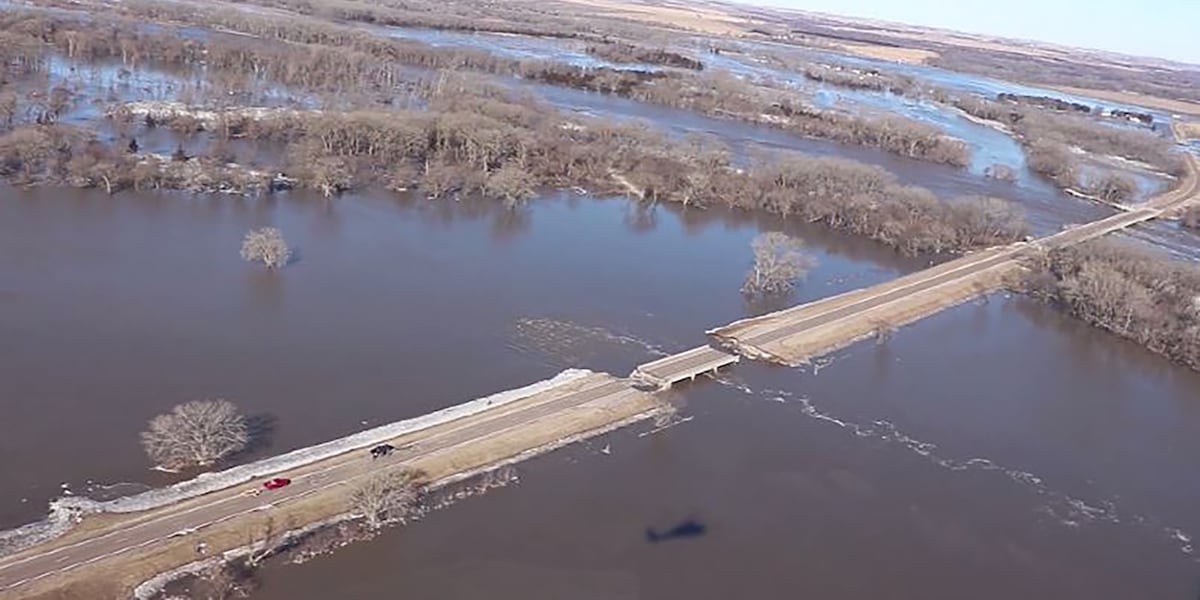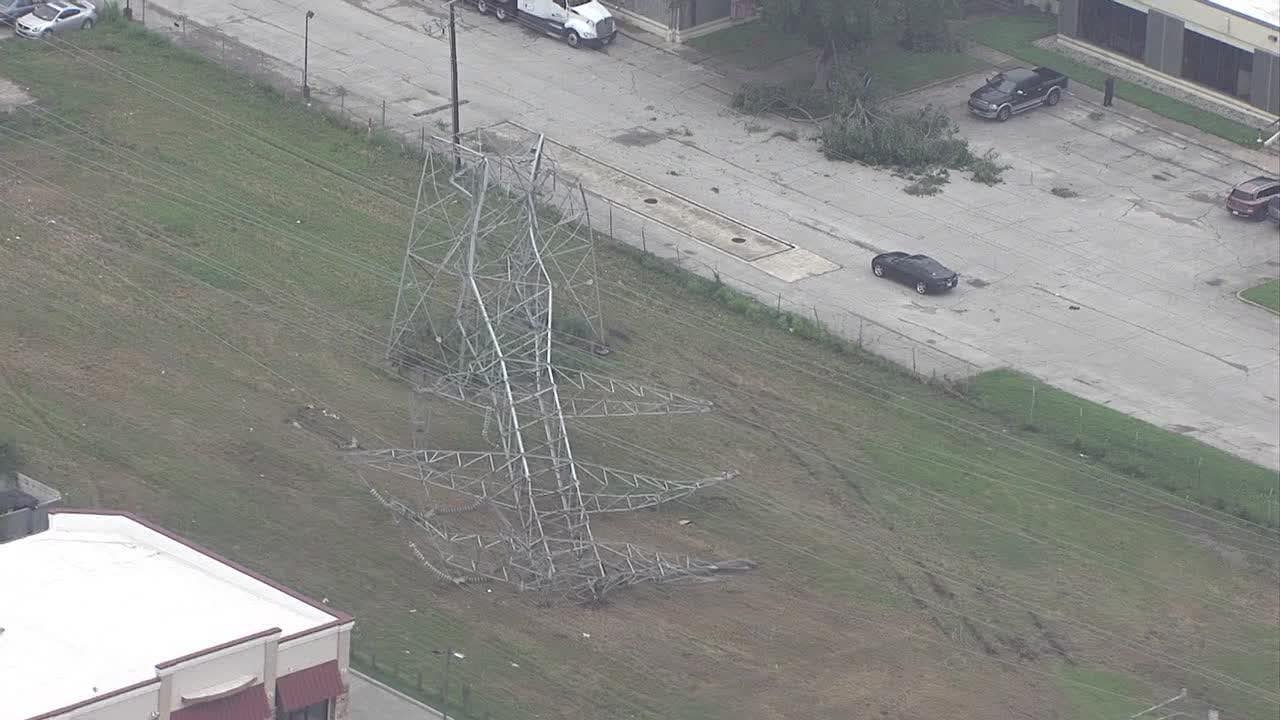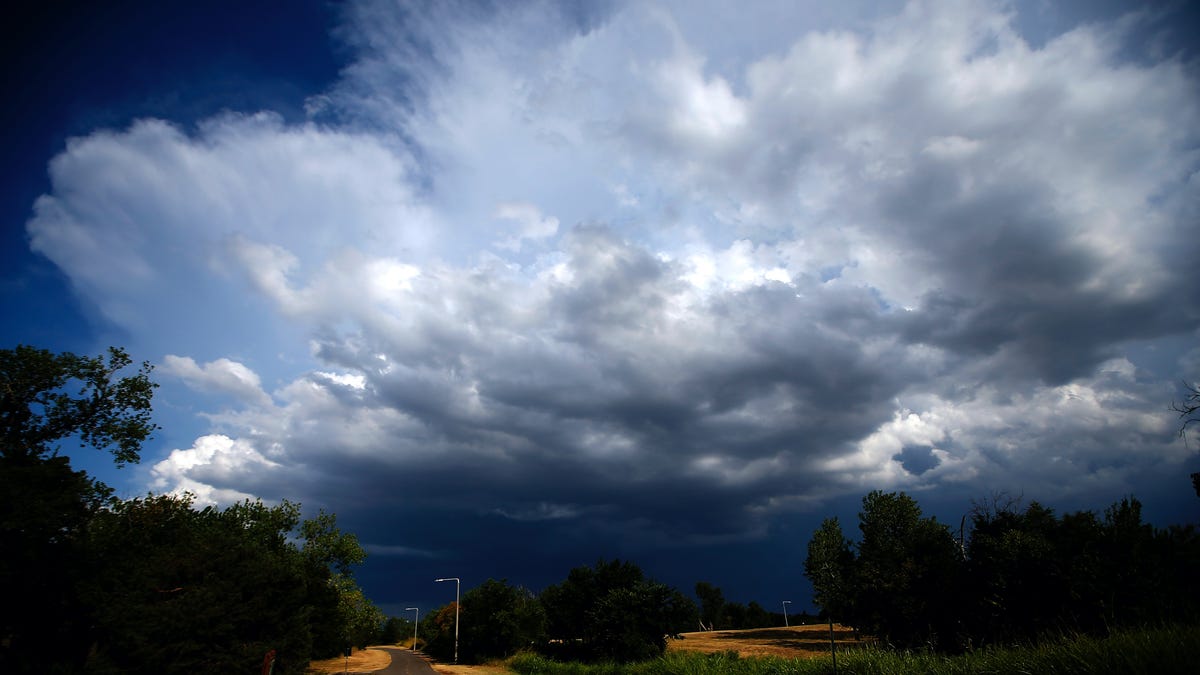Nebraska
Five years since historic floods in central and eastern Nebraska

HASTINGS, Neb. (KSNB) – March 13, 2024 marks five years since the beginning of a storm system that caused catastrophic flooding across central and eastern Nebraska.
A number of separate factors leading up to the event would set the stage for some of the most significant flooding ever experience for parts of the state.
Much of February and early March was marked by unusually cold temperatures. The period between February 15th and March 15th was recorded as the 2nd or 3rd coldest on record for the Tri-Cities and coldest since the 1960s. This kept the ground frost levels much deeper than what is typically observed for mid-March. The National Weather Service in Hastings measured a frost depth of 25 inches on March 11.
The record cold also kept thick ice on local rivers and streams much further into March than what typically occurs. This led to serious ice jamming once the ice broke up.
A series of snow events through February and early March kept a snow depth of as much as 8 to 18 inches in place for several weeks leading up to the event. This snow contained the equivalent of 1 to 4 inches of water.
A powerful low pressure system moving out of the southwest U.S. would move across the region between March 12 and March 14, bringing rain, snow, and very strong winds. During the early part of the storm, showers and thunderstorms would bring rain on the night of the 12th. Some of that rain would continue into the morning of the 13th. Most of that afternoon was dry. But by the night of the 13th and into the morning of the 14th, more rain and a change to snow would move through the area. As much as 2 to 4 inches of rain fell and 1 to 3 inches of snow. This combined with rapid snow melt due to the much warmer temperatures observed as the storm system approached.
Because of the still frozen ground, much of the rain and snow melt would run off into many of our local streams and rivers. The warmer temperatures and water run-off would contribute to the breaking up of the thick ice in place on the streams and rivers. The rapid rising rivers would begin to overflow on Wednesday the 13th and this would continue into Wednesday night and Thursday.
Rivers and creeks, along with their tributaries began to rise on Wednesday the 13th and would continue into Thursday the 14th. This included the Wood River in Buffalo and Hall County, the entire Loup River basin in central Nebraska, the Cedar River, the Niobrara River, the Elkhorn River, and the Platte River in eastern Nebraska. All low-lying areas were essentially covered in water.
Dozens of roads and bridges were washed out across the region, isolating some communities. Several water rescues and evacuations would occur. Much of this happened in the midst of blizzard conditions as the rain changed to snow Wednesday night into Thursday. Winds would gusts to near 70 mph.
Communities such as Pleasanton, Gibbon, Wood River, Alda, and Dannebrog experienced significant flooding. Dozens of other communities such as Genoa, Belgrade, and North Loup were at least partially evacuated. Large chunks of ice the size of automobiles were left on bridges and land in many locations. In some cases, rivers were completely reshaped due to the flood waters.
The Spencer Dam in north central Nebraska was completely breeched. Large chunks of ice and debris floating on raging flood waters would rush downstream, causing devastation to those in the path. Kenny Angel, who’s home was just below the dam, was washed away. His body was never found.

Impacts to agriculture were tremendous. As flood waters receded, pasture land and fields next to rivers and creeks were covered in inches of sand and silt. This flooding occurred in the middle of calving season. Hundreds of calves perished. Some reported livestock carcasses floating away. In some locations, cattle were isolated on islands. This combined with numerous damaged or flooded roads made travel to and around some farms impossible.
Flooding continued until Saturday, March 23. Water levels gradually fell between the 15th and 23rd, with flooded areas decreasing. The most widespread flooding occurred from the 14th to the 18th.
Damage estimates of property, buildings, roads, bridges, loss of livestock, and stored crops across the entire state of Nebraska was more than $1 billion.
If you want a full recap of the event in south central Nebraska, you can visit the page set up by the National Weather Service Office in Hastings.
Click here to subscribe to our KSNB Local4 daily digest and breaking news alerts delivered straight to your email inbox.
Copyright 2024 KSNB. All rights reserved.

Nebraska
Grand jury indicts Nebraska State Penitentiary inmate in the murder of his cellmate

LINCOLN, Neb. (KOLN) – A grand jury indicted a man in the murder of his cellmate at the Nebraska State Penitentiary on Oct. 29, 2022.
Lancaster County Attorney Pat Condon announced Monday a grand jury made up of 16 people returned an indictment charging Tyler Stanford with first-degree murder in the killing of his cellmate, Philip Garcia.
Under Nebraska Law, a grand jury is called whenever “a person has died while being apprehended by of while in the custody of a law enforcement officer of detention personnel.” The grand jury determines whether an offense against Nebraska criminal laws occurred regarding the death.
Following the indictment being filed, the District Court of Lancaster County scheduled Stanford to virtually appear from the Tecumseh State Correctional Institution for his initial court appearance on Tuesday at 10:30 a.m.
This is an ongoing investigation. The Lancaster County Attorney’s Office coordinated with investigators from the Nebraska State Patrol, Lancaster County Sheriff’s Office and Lincoln Police Department.
Click here to subscribe to our 10/11 NOW daily digest and breaking news alerts delivered straight to your email inbox.
Copyright 2024 KOLN. All rights reserved.
Nebraska
Nebraska Extension offers Part 107 drone test prep courses

During the months of June, July and August 2024, Nebraska Extension will be offering one-day (eight hour) courses across the state to prepare individuals to pass the Federal Aviation Administration (FAA) Aeronautical Knowledge Exam.
“The Part 107 Test Prep Course has been very successful, and students have been doing very well,” said Dirk Charlson, statewide extension educator of digital ag and course instructor, referring to the same course offered in early 2024.
During the months of January through March, Charlson taught this course across the state at six locations from the Nebraska Panhandle to Lincoln. The course had a total attendance of 87 students, who represented a mix of backgrounds from growers, educators, real estate accessors, professional photographers, and individuals involved in emergency management. In addition to Nebraska, students traveled from several states to attend, including Wyoming, Kansas, Iowa and Missouri.
This course covers aviation topics such as regulations, airspace, radio communication, weather, aircraft performance, and other basic aviation concepts necessary to pass the Part 107 knowledge exam. The exam is taken at an FAA designated location and consists of 60 multiple-choice questions.
The Part 107 Remote Pilot Exam Prep Courses are available to the public. Aviation experience is not essential to be successful in the course. The course will be offered at seven locations across the state from June through August, from 9 a.m. to 5 p.m. local time:
- June 7 — UNL Panhandle Research, Extension and Educator Center, 4502 Ave. I, Scottsbluff.
- June 14 — Syracuse Public Library, 480 Fifth St., Syracuse.
- June 21 — Hall County Extension Office, 3180 W. Hwy 34, Grand Island.
- June 28 — Gage County Extension Office, 1115 W. Scott St., Beatrice.
- July 10 — Henry J. Stumpf International Wheat Center, 76025 Rd. 329, Grant.
- Aug. 8 — Dodge County Extension Office, 1206 W. 23rd St., Fremont.
- Aug. 16 — UNL West Central Research, Extension and Education Center, 402 W. State Farm Rd., North Platte.
Registration is available online for each location. Pre-registration is required with a $275 registration fee.
Please contact Dirk Charlson for more information on this course at 402-460-0742 (text or call).
Nebraska
Nebraska Extension Introductory Level Crop Scout Training – 5/21/24 @ 8:30am
The introductory level crop scout training is designed for entry-level scouts who are working for crop consultants, industry agronomists or farm service centers in Nebraska and neighboring states. The training is also ideal for growers who scout their own fields or are interested in improving productivity, as well as for students being employed by agribusinesses.
The course, which will be held in-person, is from 8:55 a.m. to 5:10 p.m. with registration at 8:30 a.m. at the University of Nebraska’s Eastern Nebraska Research, Extension and Education Center which is located at 1071 County Road G, Ithaca, NE 68033. Nebraska Extension Educator Aaron Nygren says, “We look forward to providing participants a hands-on, in-person experience focusing on important crop scouting skills.”
Topics covered during the day include:
• Scouting Tips and Understanding Corn & Soybean Growth & Development
• Crop Diseases & Quiz
• Scouting Techniques – Soil, Tissue, Disease Samples & Drone Best Practices
• Identifying Weeds – Morphology, Using a Key to Identify Weed Seedlings
• Corn & Soybean Insect Scouting, Identification, Management
• Nutrient Deficiencies in Corn & Soybeans
• Hands on Practice
Some of the benefits past registrants stated the training provided included practical/working knowledge and better accuracy in field scouting. Other participants appreciated the hands-on, practical format. Past participants have consistently given the training high marks and state that the knowledge gained from attending improved their scouting skills.
Cost for the program is $100, which includes lunch, refreshment breaks, workshop materials and a 3 ring binder instruction manual. The take-home instruction manual includes a variety of reference materials that provide resources for crop scouting. For those attending the daylong training that don’t want a copy of the instruction manual, the fee is $60. Attendees should preregister to reserve their seat and to ensure workshop materials are available the day of the training session.
Certified Crop Advisor continuing education credits are being applied for with 6 credits in pest management, 1 in crop management and .5 in fertility/nutrient management.
To register or for more information, go to https://enreec.unl.edu/fieldcropscouttraining, contact Nebraska Extension at (402) 624-8030, or e-mail Aaron Nygren at anygren2@unl.edu. Preregistration requested by May 17 for meal planning purposes.
Extension is in the university’s Institute of Agriculture and Natural Resources.
-

 News1 week ago
News1 week agoSkeletal remains found almost 40 years ago identified as woman who disappeared in 1968
-

 Movie Reviews1 week ago
Movie Reviews1 week ago“Kingdom of the Planet of the Apes”: Disney's New Kingdom is Far From Magical (Movie Review)
-

 World1 week ago
World1 week agoIndia Lok Sabha election 2024 Phase 4: Who votes and what’s at stake?
-

 World1 week ago
World1 week agoUkraine’s military chief admits ‘difficult situation’ in Kharkiv region
-

 Politics1 week ago
Politics1 week agoTales from the trail: The blue states Trump eyes to turn red in November
-

 World1 week ago
World1 week agoBorrell: Spain, Ireland and others could recognise Palestine on 21 May
-

 World1 week ago
World1 week agoCatalans vote in crucial regional election for the separatist movement
-

 Politics1 week ago
Politics1 week agoNorth Dakota gov, former presidential candidate Doug Burgum front and center at Trump New Jersey rally


















